When it comes to crafting and refining indoor spaces, there can be some confusion between the terms ‘interior stylist’ and ‘interior designer.’ These two professions, while overlapping in their passion for aesthetics, diverge significantly in their roles, expertise, and overall approach to space. In this guide, I’m going to dissect the differences between an Interior Stylist vs Interior Designer, offering clarity to those looking to hire a professional or considering a career in the world of interiors.
Interior Stylist vs Interior Designer: Defining the two Professions
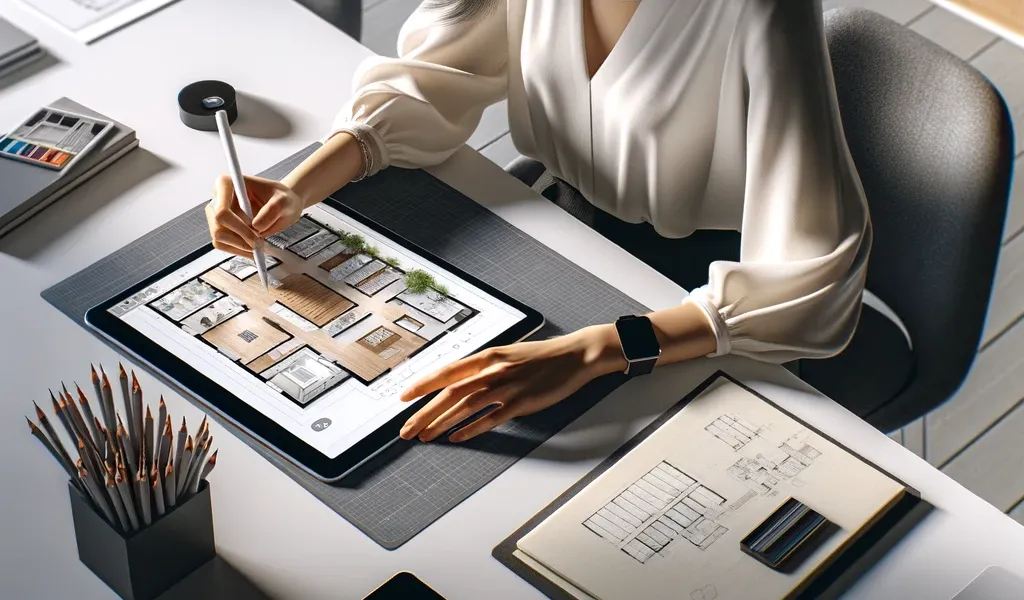
Let’s take a closer look at the roles of an Interior Designer and an Interior Stylist to see how they compare.
What is The Role of an Interior Designer?
The role of an interior designer is multifaceted, blending creative design with practical knowledge to make indoor spaces both aesthetically pleasing and functionally effective.
Here’s a detailed description of their role:
Understanding Client Needs and Vision
- Initial Consultation: The interior designer begins by consulting with the client to understand their preferences, requirements, and the purpose of the space. This includes discussing the client’s style, color preferences, budget, and any specific needs or challenges related to the space.
- Project Scope Definition: The designer defines the scope of the project, including timelines, budget, and the extent of work required.
Space Planning and Design
- Site Analysis: Conducting thorough site visits to measure and assess the space.
- Space Planning: Creating floor plans to optimize the use of space, considering factors like traffic flow, furniture placement, and functional zoning.
- Design Concept Development: Developing a cohesive design concept that aligns with the client’s vision, including color schemes, materials, textures, and overall aesthetic.
Technical Aspects and Compliance:
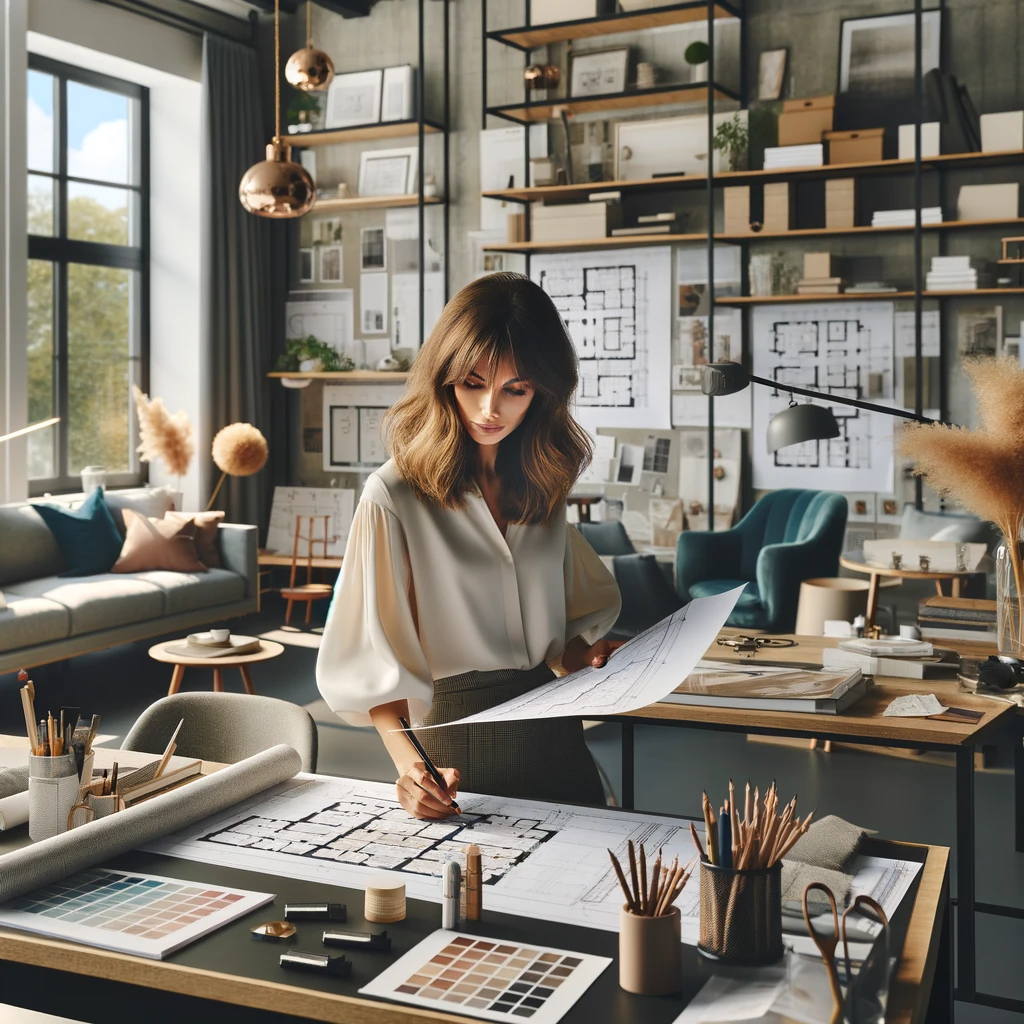
- Building Code Adherence: Ensuring designs comply with local building codes and regulations, particularly concerning safety and accessibility.
- Technical Drawings and Documentation: Preparing detailed drawings, such as elevations, sections, and 3D visualizations, which are essential for accurate execution and may be required for permit applications.
- Material and Product Selection: Selecting materials and products that are durable, sustainable, and suitable for the space and its intended use.
Collaboration and Interior Design Project Management:
- Collaboration with Professionals: Working closely with architects, builders, and contractors to ensure the design vision is translated accurately into reality. This involves communicating design details and overseeing the construction and installation process.
- Vendor and Supplier Coordination: Sourcing furniture, fixtures, and equipment (FF&E) from suppliers and coordinating their delivery and installation.
- Budget and Time Management: Managing the project budget and timeline, ensuring that the project stays on track and within the agreed-upon financial parameters.
Execution and Oversight
- Site Supervision: Regularly visiting the site to oversee the progress and resolve any issues that arise during the construction or renovation process.
- Quality Control: Ensuring that the workmanship and materials meet the specified standards and the design intent.
Final Staging and Presentation
- Staging the Space: Adding final touches such as accessories, artwork, and decorative elements to complete the look of the space.
- Client Walkthrough and Handover: Conducting a final walkthrough with the client to present the completed space, address any concerns, and officially hand over the project.
Interior designers must have a strong foundation in design principles, a keen eye for aesthetics, and a comprehensive understanding of architecture, construction, and project management. They often need to be adaptable, able to problem-solve and have excellent communication skills to effectively translate a client’s vision into a tangible, functional space.
What is The Role of an Interior Stylist?
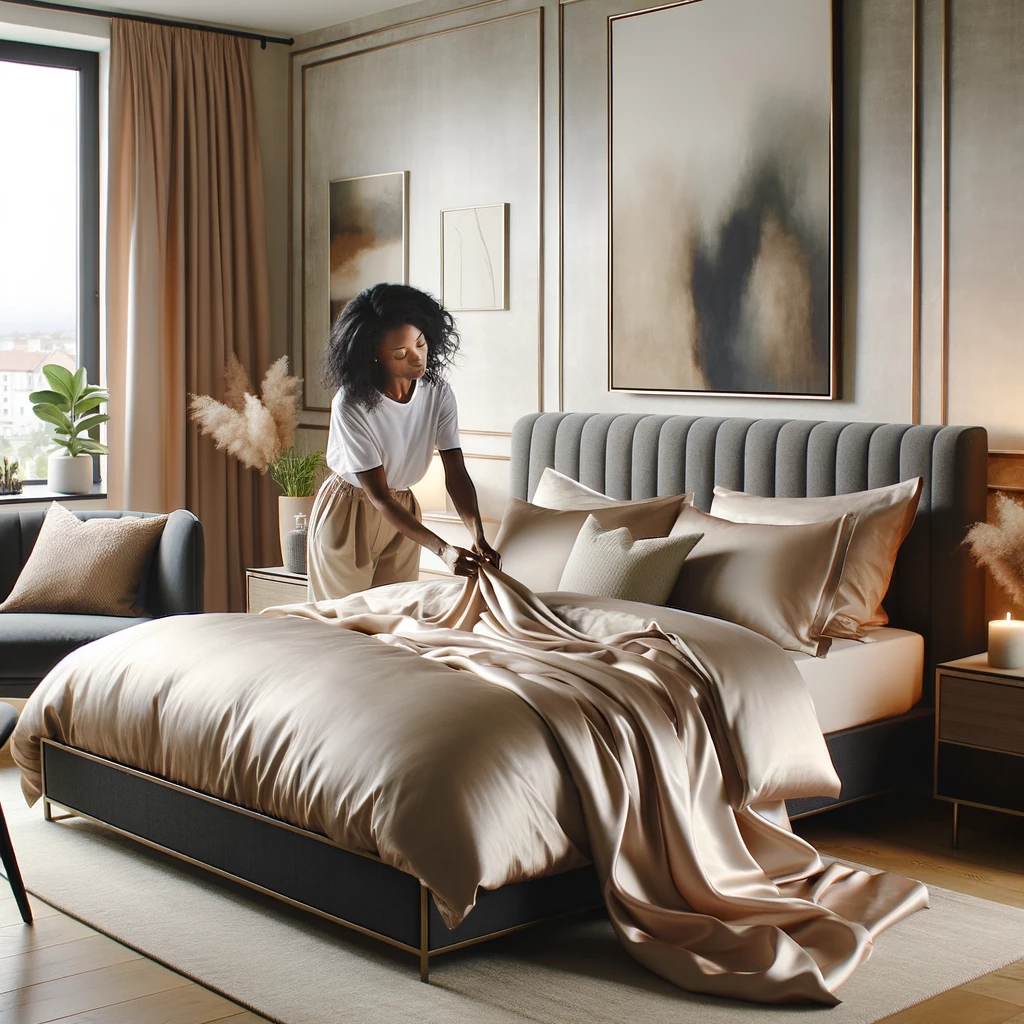
An interior stylist specializes in creating aesthetically pleasing and visually compelling spaces. Their role primarily focuses on the look and feel of an interior, often for purposes such as photography, events, or simply to enhance the living experience. Here’s a detailed breakdown of the role of an interior stylist:
Understanding Client or Project Needs
- Client Consultation: Meeting with clients or project teams to understand the desired aesthetic, mood, and purpose of the interior space. This may involve discussions about themes, colors, and personal or brand style.
- Concept Development: Developing a visual concept or theme that aligns with the client’s vision or the project’s goals.
Visual Storytelling and Aesthetic Enhancement
- Mood Boards and Style Guides: Creating mood boards or style guides to visualize the concept and ensure a cohesive look and feel.
- Color Schemes and Textures: Selecting color palettes and textures that complement the space and contribute to the desired atmosphere.
Sourcing and Curating Elements
- Furniture and Accessories Selection: Sourcing furniture, window treatments, artwork, and decorative items that fit the style and budget. This often involves a mix of shopping, renting, or repurposing existing pieces.
- Material and Fabric Selection: Choosing fabrics, wallpapers, and other materials that enhance the visual appeal of the space.
Styling and Arrangement
- Spatial Composition: Arranging furniture and decor to create a visually pleasing and practical layout. This includes considering aspects like balance, proportion, and focal points.
- Decorative Detailing: Adding final touches such as cushions, throws, vases, books, and other decorative items to style the space.
Collaboration and Coordination
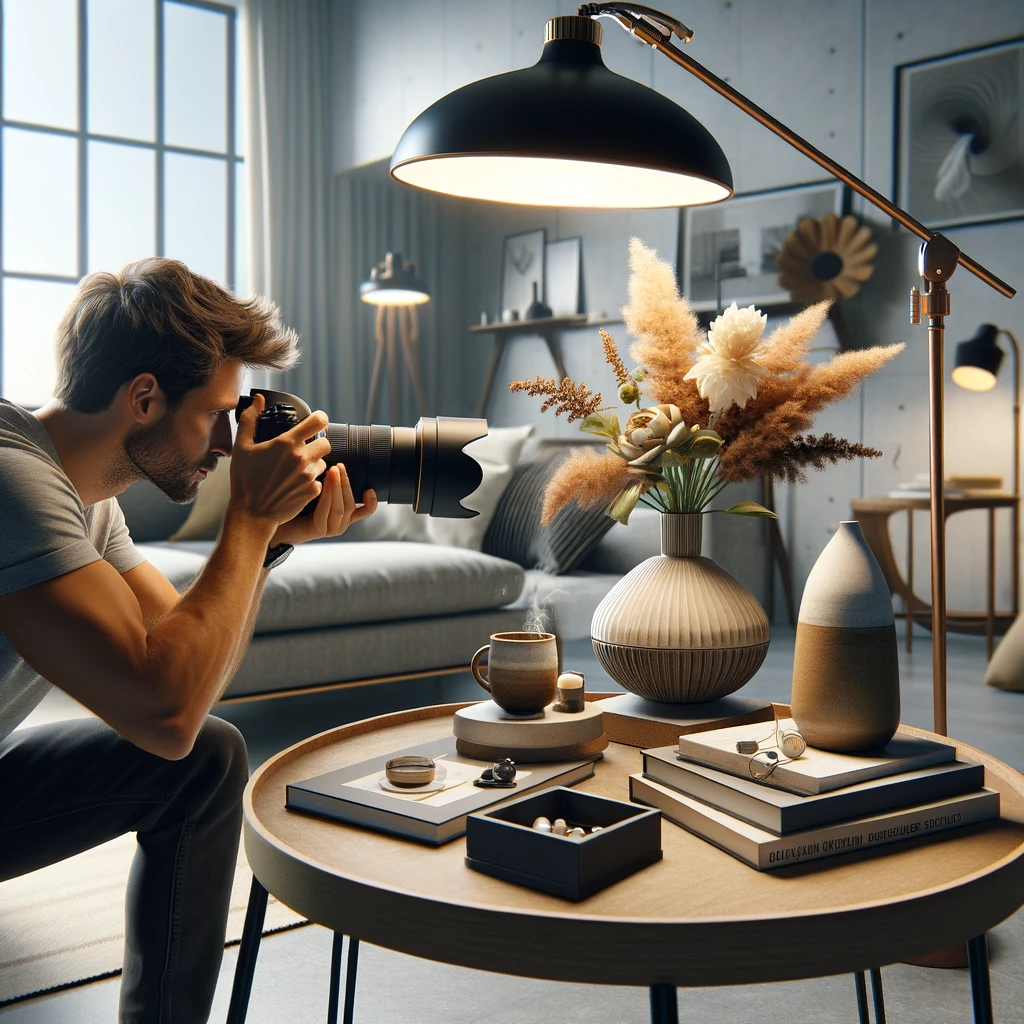
- Working with Photographers and Creatives: Collaborating with photographers, artists, and other creatives for photoshoots or events, ensuring the space is camera-ready and aligns with the creative vision.
- Vendor Liaison: Coordinating with vendors, retailers, and artisans for the procurement and delivery of items.
Project Management
- Budget and Time Management: Managing budgets and timelines to ensure project completion within the allocated resources and deadlines.
- Logistical Planning: Handling the logistics of item delivery, setup, and removal, especially for temporary installations or events.
- Versatility Across Projects: Adapting styles for various settings such as residential homes, commercial spaces, event venues, or for editorial and advertising purposes.
Trends and Industry Knowledge
- Staying Updated: Keeping abreast of current trends, design styles, and industry news to offer clients contemporary and innovative styling solutions.
Interior stylists blend creative vision with practical skills in decoration and design. They need a keen eye for detail, an ability to visualize concepts, and excellent organizational and communication skills. Their work is less about structural changes or functional design, as in interior design, and more about the art of creating an atmosphere and telling a story through the aesthetics of a space.
Interior Stylist vs Interior Designer: Educational Pathways and Skill Sets
If you are looking to start a new career in the world of interiors, there are a variety of pathways you can take. It’s important to note though, that although professional qualifications can help you on your journey, the most important thing is the people you know (your business connections) and the strength of your portfolio.
So whether you choose to become an Interior Designer, or an Interior Stylist, it’s important to always make sure you have professional quality photos from every project you work on that you can use in your portfolio and on your website to help you attract future clients.
Educational Requirements for Interior Designers
Becoming an interior designer typically requires formal education. Most professionals have a degree in interior design or interior architecture.
In the US, an unqualified ‘interior designer’ is usually known as an Interior Decorator. Only a certified interior designer can actually call themselves an interior designer.
Essential skills and knowledge include:
- Proficiency in design software like AutoCAD and SketchUp.
- Understanding of architectural principles and building codes.
- Strong grasp of color theory, textiles, and material science.
- Skills in drafting and 3D modeling.
If you’re in the UK, no formal interior design qualification is legally required to work as an interior designer, so if you wanted to, you could simply enroll in shorter courses to brush up on the skills you need alongside a SketchUp Course. Once you have the skills requires you can either start your own business offering interior design services, or gain work experience.
Training for Interior Stylists
No formal training is required to become a home stylist or interior stylist. While some interior stylists may have formal education in design, many enter the field from various backgrounds, relying more on their artistic sense and experience. Key skills include:
- A keen eye for aesthetics and detail.
- Knowledge of current trends and historical design styles.
- Ability to visualize and execute a cohesive look.
- Strong networking and communication skills.
If you want to brush up on your interior styling skills, there are some amazing interior styling courses available. These courses are great for building your confidence and getting you started on the right foot.
The most important thing will be having a strong portfolio. You can start by styling areas of your own home, or for friends to show prospective clients what you’re capable of.
Industry Perception and Client Expectatations
How the Industry Views Each Role
The interior design industry recognizes designers as technical experts who shape the core structure and functionality of a space. In contrast, stylists are seen as the final layer, adding personality and flair.
Client Expectations
Clients seeking structural changes or major renovations typically lean towards interior designers. Those looking for a refresh or thematic styling prefer interior stylists.
Impact of Interior Designers
- Long-term and sustainable solutions.
- Focus on safety, accessibility, and ergonomics.
- Catering to both residential and commercial clients.
Impact of Interior Stylists
- Immediate visual transformation.
- Temporary or seasonal styling solutions.
- Often work with homeowners, real estate agents, and magazine editors.
Interior Stylist vs Interior Designer: Final Thoughts
Hopefully this side-by-side comparison of interior designers and interior stylists has helps you understand the difference between thse two professions.
If you’re looking to start a new career as an interior designer, check out SketchUp Hub for a range of courses that can help you create professional floor plans and 3D visualations.
I also created a useful list of the best interior design books for beginners.
And if you’re thinking of becoming an interior Stylist, head to Create Academy for some great courses to build your confidence.
FAQs
Q: Can an interior designer perform the role of a stylist?
A: Yes, many interior designers have the skills to style spaces, though it may not be their primary focus.
Q: Do interior stylists participate in structural changes?
A: Generally, no. Interior stylists focus on the aesthetics rather than structural alterations. For structural changes you should consult an unterior designer or interior architect.
Q: How important is formal education for interior stylists?
A: While beneficial, formal education is not as crucial for stylists as for designers. A stylist’s strength lies in their artistic ability and understanding of trends.

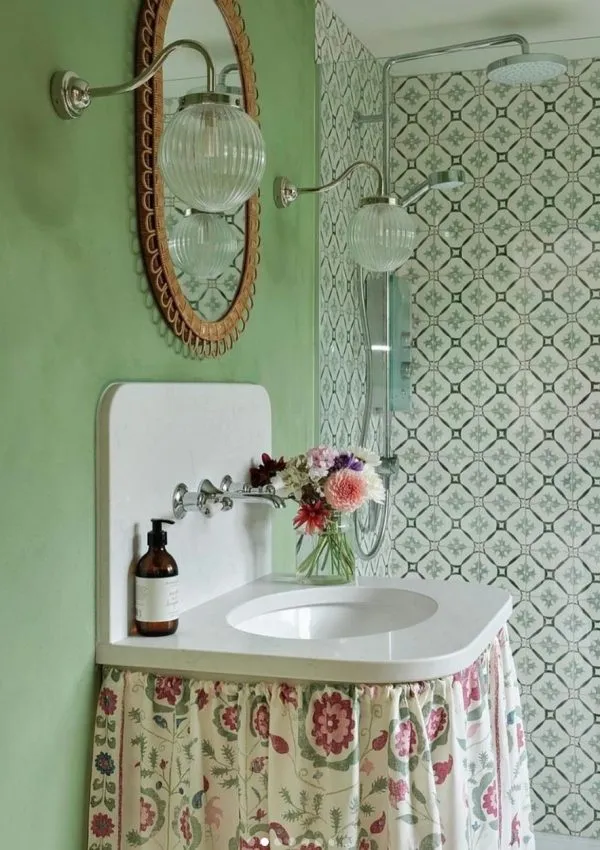
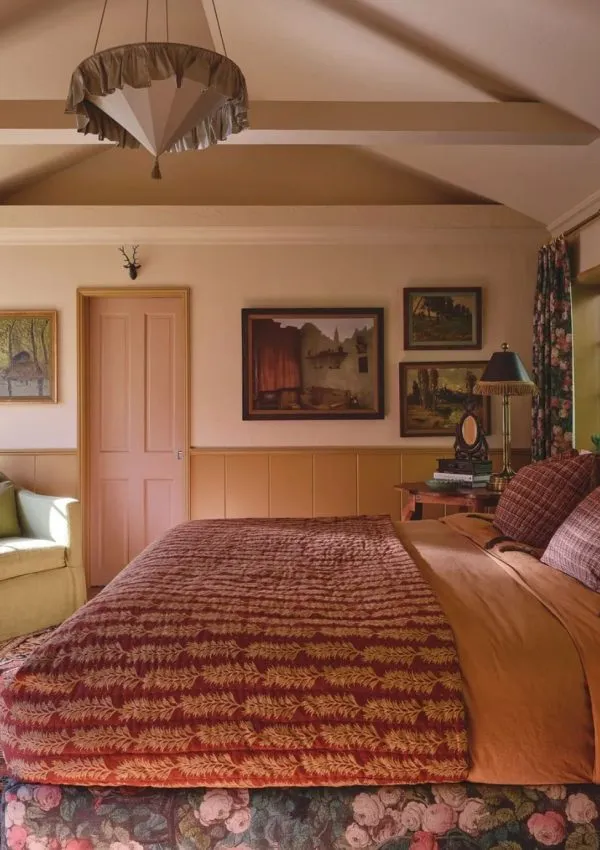
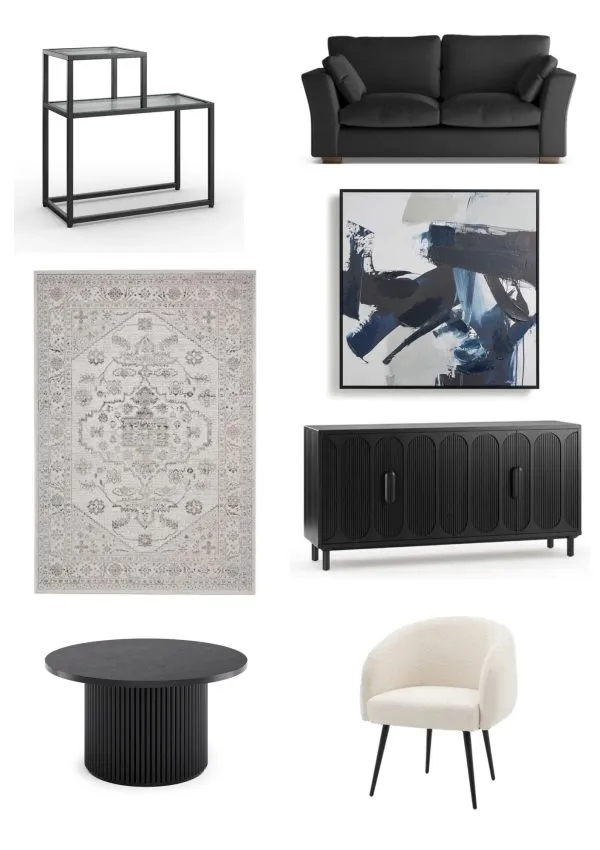
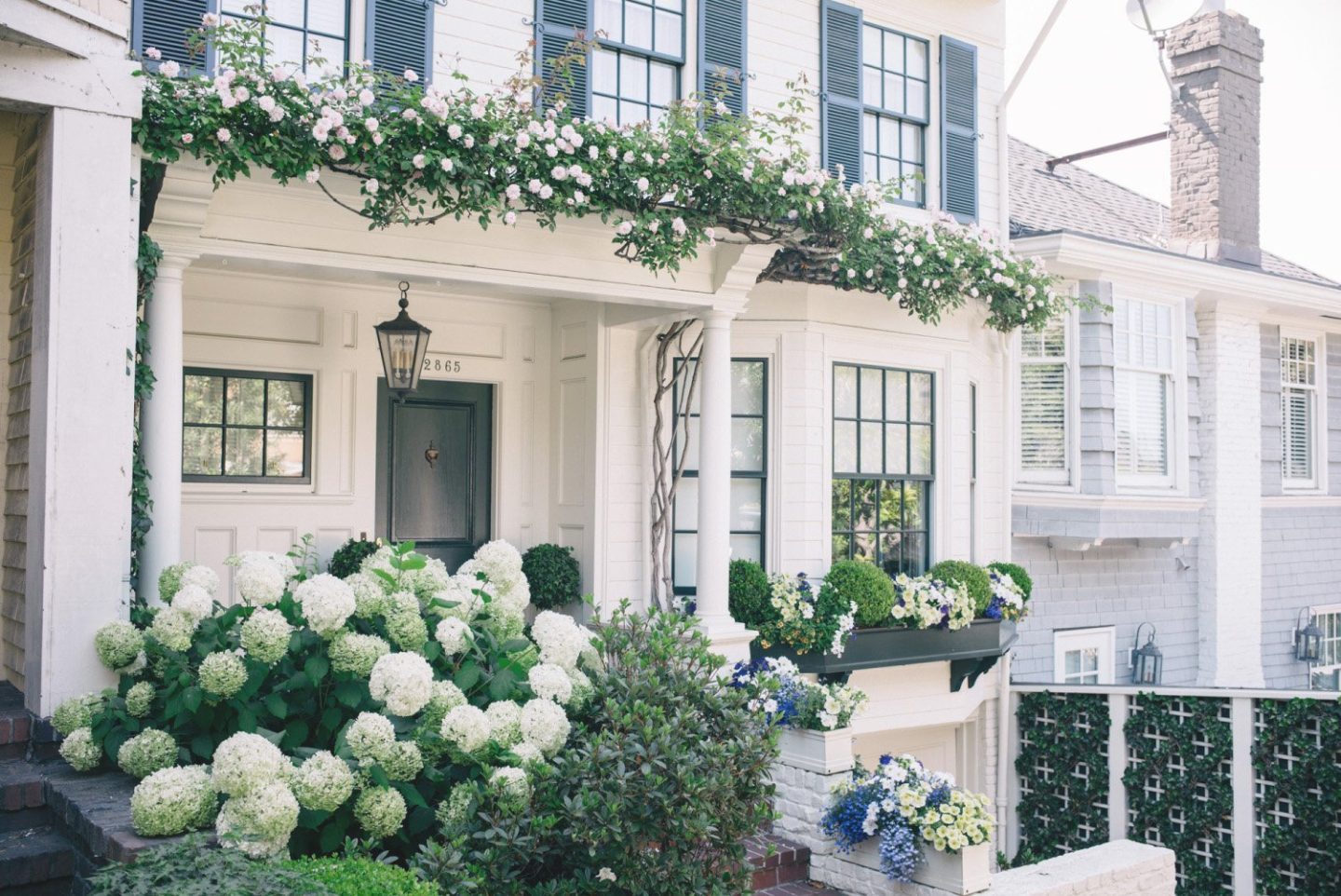

Leave a Reply